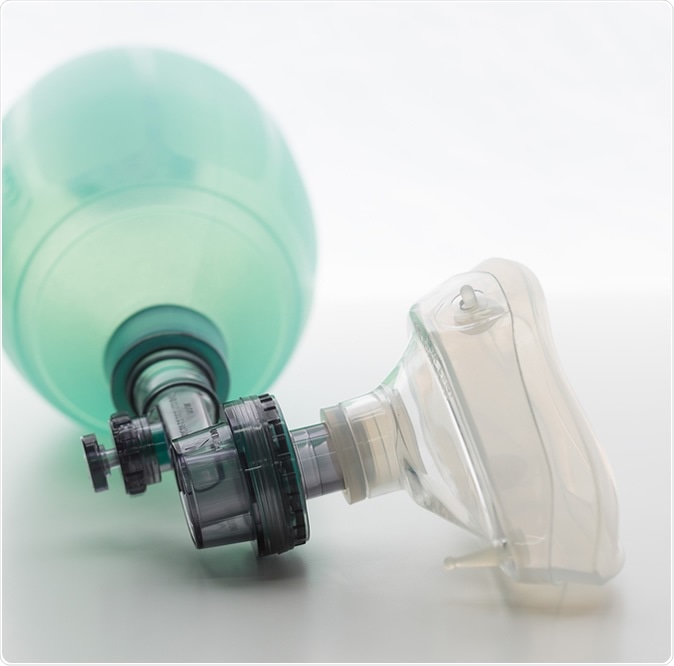The COVID-19 pandemic is exhausting the healthcare resources of many countries, both developed and developing. With the escalating volume of patients who need intensive care and ventilation, breathing masks have become a high-priority item that many medical companies are racing to fill orders for in many parts of the world.
The technology used in one case is unique – 3D printing of silicone attachments such as seals, for breathing masks. A new company that has specialized expertise in this area is suddenly faced with large rush orders for such products.
Additive manufacturing or 3D printing, as it is more commonly called, has conventionally focused on producing hard objects like those made of metal, ceramic, and plastic. Objects made of soft silicone are almost always produced by injection molding, a process in which the components are fused together at around 300 degrees.
Rush orders for silicone mask seals
Manuel Schaffner, a materials scientist, and CEO of one such firm called Spectroplast, specializes in 3D printing with soft silicone, using a new technique pioneered by him during the days of his Ph.D. research. Teaming up with Peter Stefanov to set up his own company, Schaffner found an immediate response to his offers.
The firm, which boasts the world’s first high-precision 3D printing machine in their Hongerberg campus laboratory, has been running it almost non-stop to keep up with orders from their 200-strong customer base, working in shifts with each other. Says Schaffner, “We’re actually working pretty much flat out.”
The company is running 2 of its 3D printers 24/7. It has now added 2 more, procured online, to produce 50-70 masks a day. The design files were provided by the customer, which helped get the order running almost immediately. In most situations, the printing firm first needs to get the item specifications clear, and then get a 3D scan of the item.
Despite the rush, new workers have not been brought in, because this level of high-quality production needs operators with both theoretical and intuitive knowledge, rather than newbies. This particular firm is not hunting for raw materials, as it happens. They had already created a considerable stockpile before the pandemic began, on the hunch that as use of the technology became more widespread, raw material could become harder to procure. This is paying off now, with the team being able to concentrate solely on getting the products out the door.

Production ramped up: The ETH spin-off Spectroplast is currently producing seals for breathing masks. Image Credit: Black Duck Style / Shutterstock
However, delivery efforts are being stymied by the lockdown in many countries, as well as the embargo on international flights. This has led to international customers having to wait several days longer than they usually would. The exception is Switzerland, where the Swiss Post guarantees that post will be delivered at all times.
While acknowledging the challenges of operating under present COVID-19 conditions, the firm is also delighted at the opportunities to thrive as a business in a competitive global market. Moreover, they like the fact that these opportunities have come up in a niche that is directly contributing to COVID-19 relief. Schaffner says, “The world is in crisis,” he says, “and to get through it, we’re going to need innovative ideas.
Why is 3D silicone printing better in this situation?
The customizable nature of 3D printed products using silicone lies behind this sudden demand. 3D printing is better than injection molding in two ways: it is capable of coming up with very complex shapes, but it is also a cheaper and simpler production technique as it prevents the need to make molds, and lends itself to automation. This means that it can be used to mass-produce custom-built components for any client.
Spectroplast pioneered its method of making silicone gadgets with 3D printing. The goal they have in mind is to help doctors save the lives of patients, by eventually creating medical implants, hearing aids, and maybe artificial heart valves, each made to order for the individual patient. However, such devices have to be screened extensively under existing regulatory and approval regimes for medical technologies.
Thus, the current ability to make medical-grade implants is being kept on hold while the company concentrates on producing life-improving products. This includes customized breast prostheses to avoid having to offer breast cancer patients obviously mismatched standard off-the-shelf replacements after surgery to remove one breast in the future will have to wait several years.
Spectroplast spreads the technology
Spectroplast has received a welcome infusion of cash from AM Ventures Holding GmbH. This will allow them to hire four more staff members, as well as readying a prototype of the next generation of 3D printer that will allow higher production capacity. The device should be ready by year-end, says Stefanov. He is concentrating on repurposing traditional printer components to create a silicone-ready printer.
The future for Spectroplast will see higher profits flowing in, not just from a greater array of 3D printed objects but also from the production and sale of more printers and consumables.